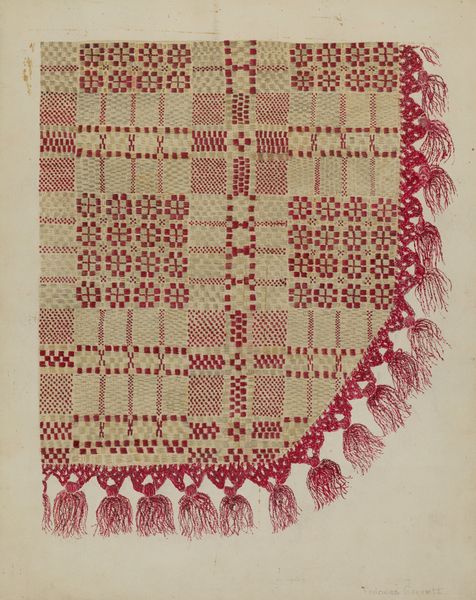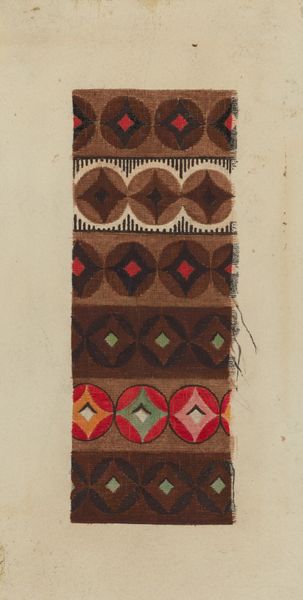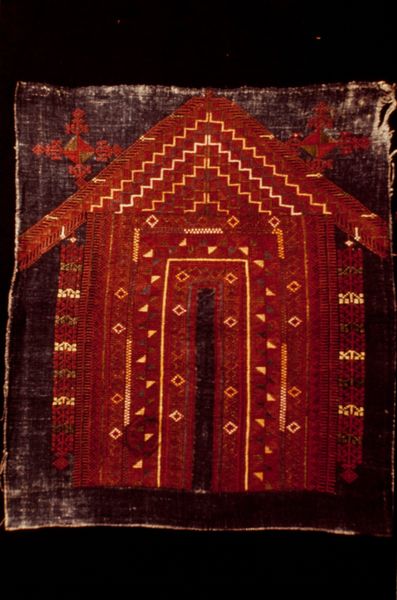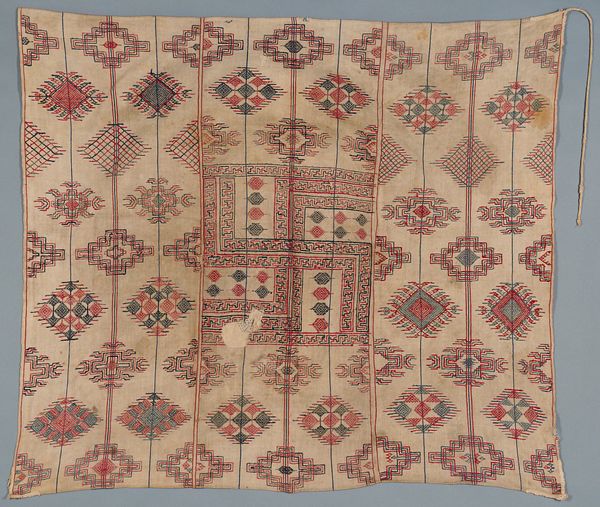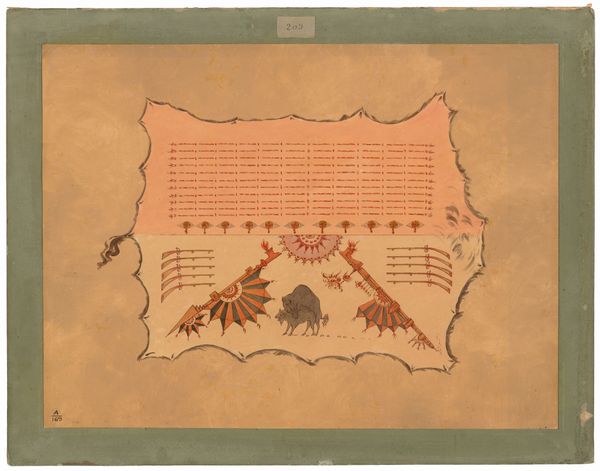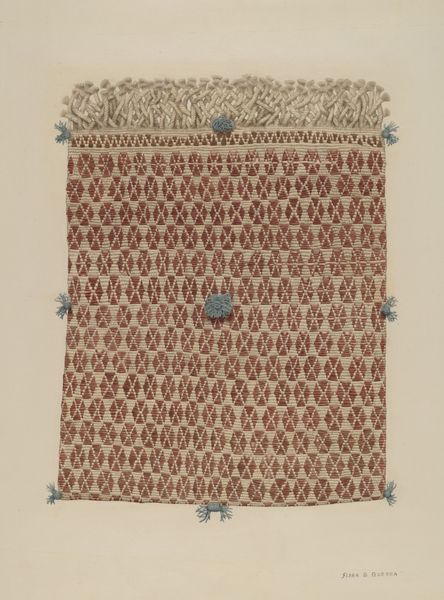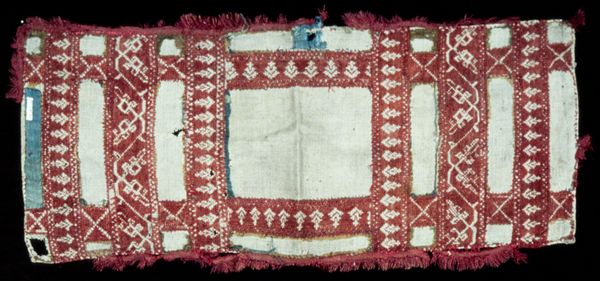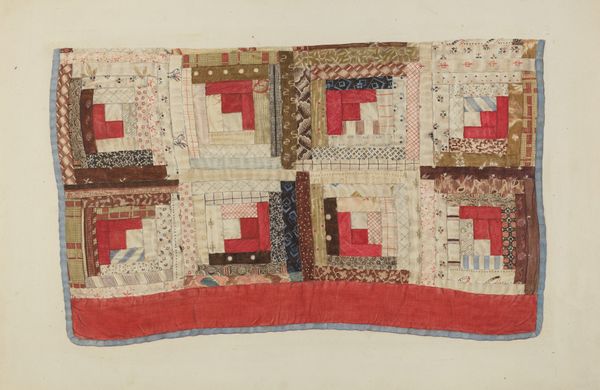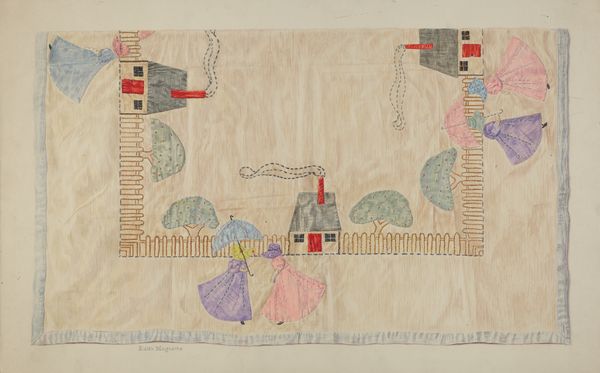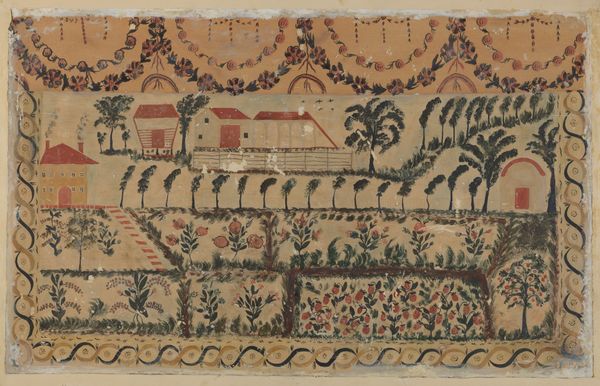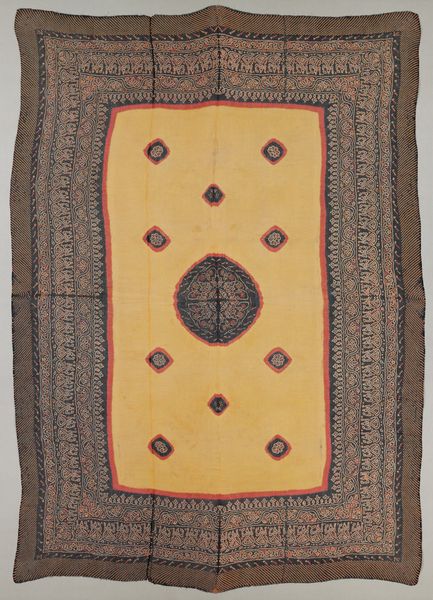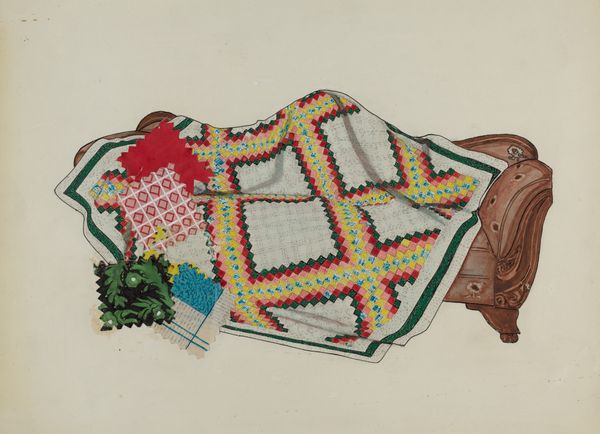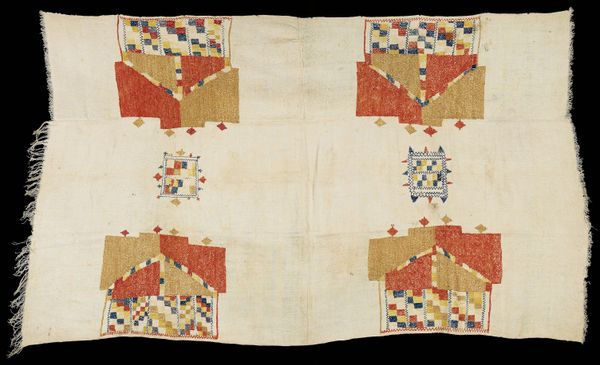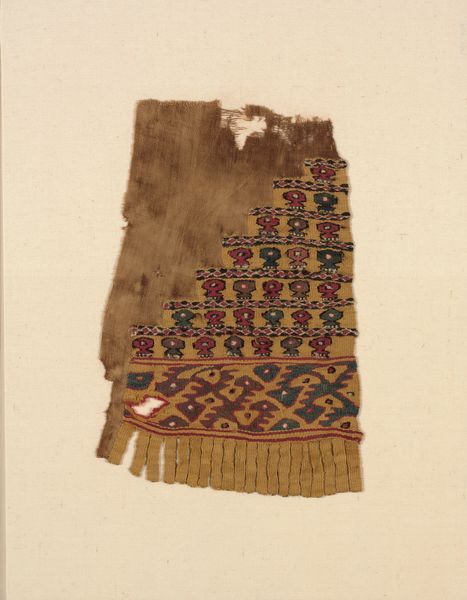
Textile Design with Vertical Rows of Groups of Three Rectangles Framed by Garlands of Branches and Separated by Rows of Groups of Four Pearls 1840
0:00
0:00
drawing, coloured-pencil
#
drawing
#
coloured-pencil
#
water colours
#
coloured pencil
Dimensions: Sheet: 3 1/8 × 3 9/16 in. (7.9 × 9 cm)
Copyright: Public Domain
Curator: Here we have an anonymous textile design from 1840, currently residing at the Metropolitan Museum of Art. It presents vertical rows of rectangles framed by garlands and separated by pearl-like rows. What’s your initial read on this piece? Editor: It strikes me as… curious. There’s a playful asymmetry fighting with the rigidity of the grid. It's comforting, somehow, like a familiar melody with unexpected chords. Curator: Indeed. It is executed using coloured pencil, and potentially watercolour as well. What's most interesting is that interplay you’ve mentioned – the contrast between the geometric arrangement, and the organic, almost rambling garlands. Editor: Those garlands remind me of Dionysian wreaths. They aren't just decorative; they are symbolic of nature, fertility, and even ecstasy. Notice how these organic forms both frame and soften the otherwise hard edges of those very controlled rectangles, in sets of three... Curator: The use of precisely repeated sets and rows does conjure up a feeling of industrial production and its mechanisation of labor – textile mills and their repetitive rhythms spring to mind. This piece hints at both the freedom of handicraft and the constraints of industrialisation. What’s your perspective on those colours? Editor: The muted palette enhances the dreamlike quality. Those blocks of ochre, russet and lavender are arresting and symbolic of…royalty maybe, given their context amongst these structured rows? Are we seeing some form of controlled explosion? Curator: Perhaps. One might even say these colours act as class signifiers or brand identifiers woven directly into the design, intended to reach specific sectors of the market. The pearls could also stand as an imitation of wealth, easily consumable. Editor: An astute point! The pearls, certainly, act as small points of concentrated wealth and social desire. They echo across cultures as status markers and talismans; you could spend hours decoding the historical semiotics here... Curator: It certainly invites contemplation! Looking at this design now, I appreciate the tension it embodies. It encapsulates so many layers about industry versus nature, restriction versus liberty... Editor: Agreed. And in this tension lies the drawing's subtle power. A complex story is rendered on what initially seemed like a pretty and simple design, a reminder that symbols and objects can hold deep histories, influencing what we might value at a moment's glance.
Comments
No comments
Be the first to comment and join the conversation on the ultimate creative platform.
